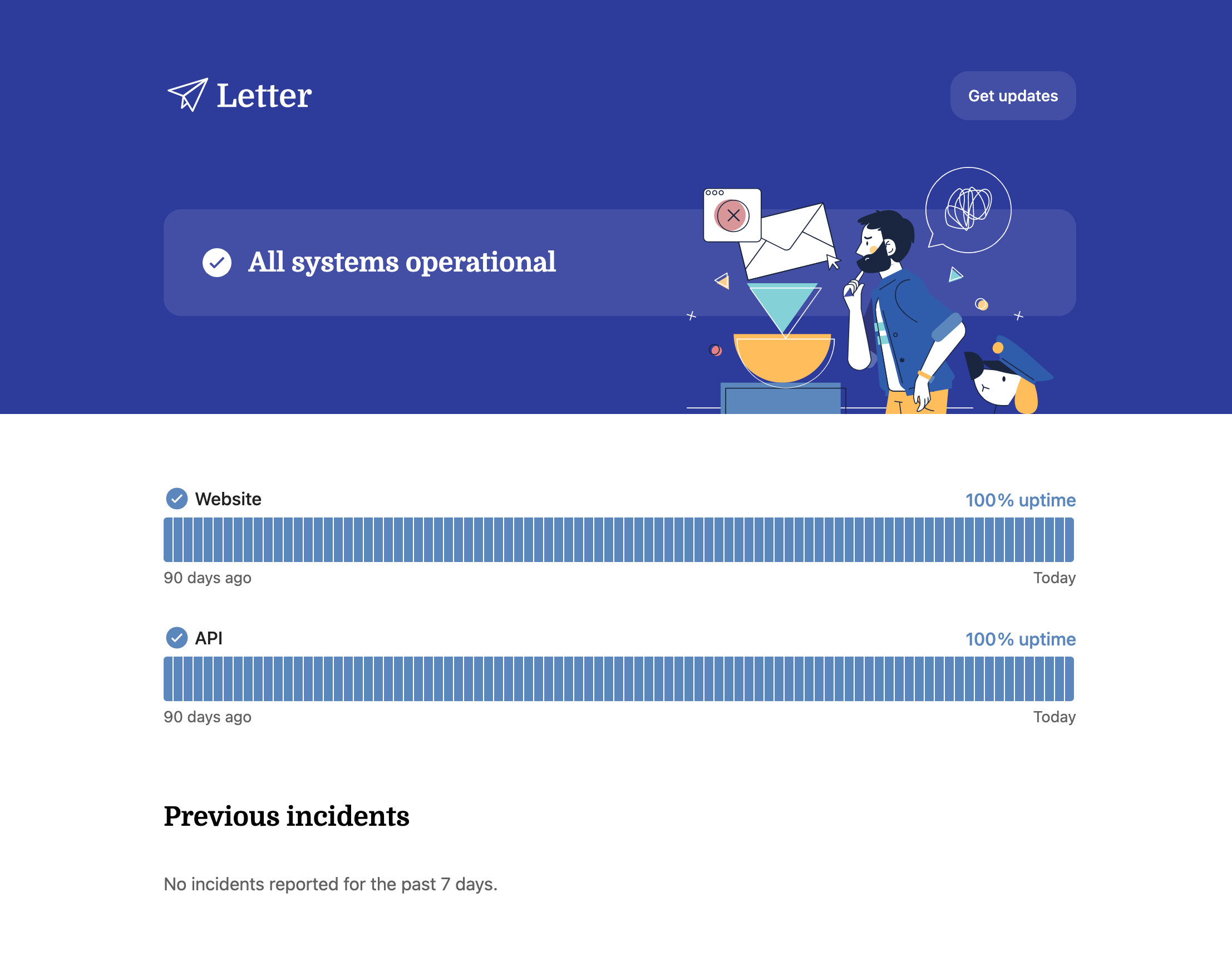Understanding the Differences Between Active vs. Passive Monitoring

Network monitoring is a best practice for any company. With it, you can ensure strong network performance so tat the user experience is as optimal as possible.
Healthy networking monitoring involves two types: active and passive monitoring. As you set up your business’ network, you will need both types in order to pinpoint issues and resolve them in a timely manner.
At Instatus, let’s take a closer look at active vs. passive monitoring, so that you understand when to use one or the other to achieve the best network performance and keep your website or product running smoothly.
What is Active vs. Passive Monitoring?
Active and passive network monitoring have distinct scopes and purposes. To understand the difference between active and passive monitoring, check out these in-depth summaries below.
What is Active Monitoring?
Active monitoring is all about predicting performance by simulating behavior across the network from end-to-end. The purpose of active monitoring is to get complete, real-time visibility into the network to identify issues before current users may be affected.
Because of the large scope of active monitoring, active analysis is best used for analyzing a specific metric, such as packet loss, jitter, HTTP response time, latency, etc.
Keep in mind that active monitors are based on predictive data, so they may not always be an accurate simulation of network performance. Active monitoring also involves a large amount of network resources because it creates constant, real-time data.
Pros
- Predictive approach to network troubleshooting.
- Simulates end-user behavior.
- Complete, real-time visibility into the network.
- Lets you see potential issues before they affect users.
What it Measures
- Best when analyzing a specific metric, such as packet loss, jitter, HTTP response time, latency, etc.
- Also good for policing SLAs.
- Can determine performance of new hardware.
Cons
- Based on predictive data, so not always accurate.
- Resource-intensive.
What is Passive Monitoring?
In contrast, passive monitoring or passive analysis gives insight into real user data from specific points in your network. It samples a large amount of data from the period selected, so you can cover a wide range of metrics. For this reason, passive monitoring is a more holistic view of your network.
Passive analysis is important because it involves real data, so you can see what’s actually impacting users and measure the quality of user experience. It’s especially good for analysis and communication after an incident to understand what went wrong. Some typical metrics you can measure include signaling protocols, application usage or top bandwidth, byte and packet transmit, etc.
Finally, passive analysis is less strain on your network because it’s not end-to-end and doesn’t run constantly. However, it does require specialized hardware to analyze user experience on a specific device.
Pros
- Pulls real user data from specific points in the network.
- Collects large amounts of performance data.
- Gives a holistic view of a network’s performance with a range of metrics.
- Doesn’t require another site in the network to be involved.
What Passive Monitoring or Passive Analysis Measures
- Highlights issues that directly impact end-users.
- Less strain on network resources.
- Good for measuring depth traffic and protocol analysis, especially for a post-incident scenario.
- Specific port metrics include signaling protocols, application usage or top bandwidth, byte and packet transmit, etc.
- Get an in-depth view into the user’s quality of experience.
Cons
- Issues identified impact actual users and must be addressed immediately.
- To analyze the experience on a specific device, you’ll need specialized hardware.
- As your network becomes more complex, you must keep your passive monitors 100% updated to reflect their changing nature.
Differences Between Active Monitoring vs. Passive Monitoring
Now that you know what is the difference between active and passive monitoring, here are some use cases that highlight how each type can be used to avoid blind spots in your network’s performance.
Active Monitoring Use Cases
Because active monitoring is all about predictive, end-to-end simulation, some potential use cases include:
- Checking the quality of service through simulations intended to improve network performance.
- Identifying potential quality issues before they impact the customer.
- Troubleshooting impacted services and checking the range of affected areas.
- Choosing alternate servers or paths that are best for certain services or apps.
Passive Monitoring Use Cases
On the other hand, passive monitoring samples real user data, which makes it best for:
- Finding the root cause after a service incident or interruption.
- Analyzing customer usage patterns to improve quality of user experience.
- Creating personalized services based on usage preferences and service demands.
Which Type of Monitoring Should You Use?
| Active Monitoring | Passive Monitoring |
|
|
The short answer: both. Ultimately, you’ll require both active and passive monitoring to keep your network healthy. Your IT team should apply both so that you can monitor and improve your network’s performance over time.
As we’ve discussed, active network monitors give you predictive data to flag potential issues before they become apparent to users. Passive network monitors give you real user sampling so you can get a holistic look into your network’s metrics.
Take the Pulse on Your Network with Instatus
Your network’s performance is vital to providing top-notch service and user experience. To get the full picture of your network’s health and stay ahead of the competition, you’ll need both active and passive monitoring.
Instatus can help you monitor your network in style. Get a beautiful status page, where you can track and share issues with customers – all at an affordable price. With Instatus, you can take care of unplanned outages and build trust with your users from an informative status page.
Get ready for downtime
Monitor your services
Fix incidents with your team
Share your status with customers


